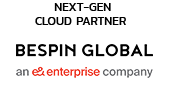
How are regional companies best using AI to deliver a more personalised customer interface? What are organisations doing to balance innovation with ethical AI use and data privacy? To get the answers first-hand, Veronica Martin spoke to Suliman Gaouda, Regional Vice President – MEA, at Sitecore.
AI is the headline theme this year. How are regional companies using it to deliver smarter, more personalised customer experiences? Can you share examples of how organisations in the Middle East are using these AI-driven capabilities to drive engagement and tailor content to their users?
“Sitecore has been a leader in customer experience for 23 years. Unlike others, we haven’t grown through acquisitions; we were born and bred in the customer experience space, with content at the core of everything we do.
“For us, content forms the epicentre of how we manage experiences. And when we say ‘content’, we don’t just mean the obvious elements, like images, text, and videos. We believe content is the experience: the button, the form, the agent, the chatbot – every element you interact with on a screen contributes to the overall journey.
“Over the past two years, AI has become a major theme, and at the centre of that transformation is content. While many focus on the obvious use cases like video generation, for us it’s about that last mile of execution. It’s about the subtle, human touch that makes a real difference in how experiences are delivered.
“We offer a suite of products that help our customers manage and activate their content effectively. Starting with content management – how you push and pull assets from your media repository – we have a product called Content Hub, where customers centralise all their content. Then there’s our CMS, the main pillar of content experience, powering delivery across web, app, and kiosk platforms. It pushes and pulls data seamlessly to any interface or ‘head’ you choose.
“When we began exploring agentic AI experiences, Sitecore was among the first companies to partner with OpenAI out of Redmond, Seattle. Together with Microsoft and OpenAI, we built a solution for Nestlé designed to manage content for their 3,000 brands – everything from packaging and websites to digital displays. The challenge was helping them tag and locate content quickly and efficiently.
“Initially, they had about 200 employees in the Philippines manually managing this process. We demonstrated how our agentic platform – which began as a proof of concept – could automate and optimise it. Today, that POC has evolved into a fully-fledged product called Stream.
“Stream focuses on three main areas:
- Workflow optimisation: creating intelligent reminders for marketing teams to manage and approve content seamlessly.
- Brand consistency: our ‘brand police’ agent ensures brand alignment across every channel – web, TV, digital boards, websites, apps, and kiosks.
- Campaign acceleration: helping companies move from concept to campaign in days instead of months.
“For example, we’ve seen this need with major automotive brands. Imagine a company expecting 2,000 new cars in two months, while still holding 200 in inventory. To move that inventory, they need a campaign, but traditional campaign creation can take up to three months. Our platform enables rapid, data-driven campaign creation, identifying which customers will best respond to which content. That’s true personalisation at scale: driving real business results while avoiding costly supply chain bottlenecks.
“We also recently introduced a partnership with Grad Deal. One of the key users of our system is the content author – the person responsible for creating, curating, and publishing digital experiences. Now, with our agentic capabilities, we can automate parts of that process.
“These AI-driven agents understand user profiles, preferences, and behaviors; everything from colour and sound choices to video engagement patterns. They can dynamically pull the most relevant content from Content Hub, personalise it, and deliver it instantly. For example, if it’s winter, the system automatically selects winter imagery; if you’re planning a specific trip, the visuals will reflect that destination. Everything is customised in real time to enhance user engagement and drive conversions.
“Ultimately, it’s all about creating transactions; turning engagement into measurable business outcomes.
“When we take a step back, we often ask: why do customers invest in this? On average, companies spend around 1% of their annual revenue on content creation. Yet only 6-20% of that content ever sees visibility – meaning 80% remains unseen.
“Our goal is to change that. By improving engagement even by just 1%, companies can see a meaningful return in online sales and customer interaction. Online sales are inherently more profitable. There’s no physical store, no overhead, no staff costs; it’s a frictionless experience.
“And that’s what we aim to deliver: a seamless, intelligent, and personalised journey that connects brands with customers – powered by content, optimised by AI, and driven by experience.”
As digital transformation accelerates, how can organisations balance innovation with ethical AI use and data privacy? How does Sitecore support ‘responsible digital transformation’ for its customers?
“This is actually something we anticipated early on. In fact, Sitecore was ahead of the curve on this. Back in 2021, before generative AI really entered the mainstream, we made a strategic acquisition of a company called Reflektion – an AI-powered search platform founded by one of Google’s earliest engineers, employee number 13, who later went on to build this remarkable technology.
“We brought Reflektion into the Sitecore ecosystem because we understood something fundamental: the way users navigate digital experiences is no different from how they move through their favourite supermarket. When you visit that supermarket every day, you instinctively know where everything is: vegetables, milk, the cookware. You have a mental map of your journey.
“Our mission was to help our customers recreate that same sense of intuitive familiarity across their websites and digital channels, ensuring that every returning visitor experiences a personalised, seamless journey.
“That personalisation has to respect privacy, though, so that’s why, in the same year, we also invested in another major technology called Boxever. Around that time (late 2021) the industry began shifting rapidly toward a ‘cookieless’ future, with major players like Meta and Google committing to privacy-first approaches.
“The answer to this shift lies in first-party data, building a foundation of trust where customers willingly share information in exchange for better, more meaningful digital experiences.
“So, our philosophy at Sitecore has been clear and consistent: By combining AI-powered personalisation with first-party data strategies, we’re building a privacy-respecting ecosystem where brands can engage customers deeply without compromising trust.
“That’s the principle behind everything we do. From our AI-powered search to our customer data platform and our CMS solutions. The ultimate goal is simple:
- Encourage repeat visits to your website.
- Inspire users to create first-party profiles.
- Deliver personalised, relevant content – while maintaining transparency and control over their data.
“We’ve also taken this philosophy a step further by focusing on data sovereignty, which is particularly important for our regional clients. We’ve worked closely with local partners to develop sovereign cloud solutions, ensuring that sensitive data remains within national borders.
“For example, our SaaS CMS – XM Cloud is now being adopted by several major organisations across the Middle East. Although the content delivery network (handling non-personal data like images and videos) operates out of Rotterdam, Netherlands, all personal information stays within the country.
“This level of assurance has been key to winning the trust of some of the region’s most prestigious clients – including a globally recognised sporting event that will take place here again in a few years.
“At the heart of it, our innovation is driven by one purpose: to give marketing teams control of their channels. With low-code, no-code capabilities and reduced tech dependencies, marketers can now own and manage their customer experience end-to-end: from content creation and personalisation to data management – all the while staying fully compliant and secure.
“That’s the evolution we’re leading at Sitecore: empowering brands to build lasting, trusted digital relationships in a privacy-first, AI-driven world.”
Technology is evolving fast. What should CIOs prioritise to keep their digital platforms flexible and ready for what’s next?
“I believe the UAE – and Saudi Arabia as well – are among the few countries truly taking a step ahead of the global curve when it comes to AI and digital infrastructure. Both nations have made massive investments in data parks and energy-efficient infrastructure, creating the ideal environment for the next generation of AI innovation.
“What we’re seeing now is that many major U.S. companies are beginning to host their AI initiatives right here in the region, driven not only by the lower energy costs but also by the scale and sophistication of regional data infrastructure. This has positioned the Middle East, particularly the UAE, as a rising global hub for AI development – from foundational data centres to full-stack enterprise applications.
“Across this ecosystem, there’s a clear pattern emerging. Many CIOs are exploring new AI use cases and proof of concepts (POCs), while others are taking a more measured approach, stepping back to first define a cohesive AI policy for their organisations. We’re working closely with consulting and advisory partners such as Accenture, PwC, Deloitte, and Loban who are helping enterprises formulate comprehensive AI strategies, and we’re building our solutions to support and accelerate those frameworks.
“Our focus at Sitecore is on use cases that directly impact both top-line and bottom-line performance. Whether it’s increasing revenue through personalisation or driving operational efficiency through automation, we’re seeing tangible results across industries.
“For example, through our partnerships, we’ve recorded up to 30% cost reductions in content authoring and production – an extraordinary figure, especially for global enterprises that spend $50-100 million annually on content operations. These efficiency gains translate into enormous value.
“That said, not every organisation is moving at the same pace, but right now, it’s really all about the use case. At this point in time, the biggest and most impactful applications are clearly in industrial AI. Industrial AI is delivering significant returns for customers across energy, manufacturing, maintenance management, and workflow optimisation.
“However, when it comes to content, we’re seeing use cases that generate around 30% reduction in production costs. Now, a 30% reduction in content compared to a 30% reduction in other sectors may have different absolute values, but the impact is still substantial.
“We’re noticing that when the CIO and CMO are both well-versed in the subject, or when the topic is overseen by the CDO, there’s a much greater willingness to participate, run proofs of concept (POCs), and drive innovation.
“For example, in the airline industry, we’ve developed agents that combat bots due to the high level of competition. Airlines often deploy bots that scan other airline websites to capture pricing data. We’ve helped our clients create intelligent agents that can distinguish between a bot and a human visitor – offering the bot one price and the human a special one. This creates a level of disruption that benefits the business while protecting its competitiveness. Across the region, this kind of innovation has become the norm. In fact, I can count only three airlines in the Middle East that don’t currently use Sitecore.”
From an infrastructure and data management perspective, what would you advise CIOs in this region to focus on, so their digital experience strategy remains scalable?
“For us, we see Content Hub and the media repository somewhat like a large language model. Companies have been investing in content since the very beginning of the internet. When we look at all that content and ask CMOs or customers where it’s stored, most of the time the answer is somewhere on a hard drive or a USB – especially content from 2003, 2008, or 2010.
“We advise CIOs, CMOs, and CEOs to consolidate all that content into a single, central location. By integrating AI into this digital asset management system, we can learn from the content itself, understand branding guidelines, and generate new content or amendments much faster.
“This means that if agents are already capturing my vision and providing instant responses – rather than waiting weeks – I can produce new content without incurring the massive spending typically required with agencies. That budget can then be redirected toward innovation, focusing on how to bring content from the digital space into immersive digital experiences.
“We’re already seeing customers explore holograms in retail instead of mannequins, and we’re witnessing augmented reality emerging as a new channel for digital engagement. Our goal is to prepare clients for this experience layer, allocate AI resources effectively, and convince them to establish a central repository for content. Once in place, agents and AI can learn about the brand, the content, and the customer, generating experiences that leave a lasting impression.”
CIOs and CISOs in the region are increasingly concerned about the risks of generative AI. What frameworks or internal checks should enterprises have in place to use AI responsibly and protect customer data?
“I think this topic today largely falls under the responsibility of the CIO. At Sitecore, we have our own protocols and work to educate our employees, but in reality, most companies – including ours – want employees to explore the world of AI, but we expect them to do so responsibly.
“Internally, we have strict protocols: certain documentation or legal files should never be uploaded to AI platforms. Many companies follow similar approaches, restricting document uploads to systems like ChatGPT and training employees on what is permissible. For example, instead of uploading a document labelled ‘Sitecore’, employees might rename it creatively – like “Acne,” “FY,” or even a backward-coded version of the name – so they can achieve the desired outcomes without exposing sensitive information.
“Another consideration is that AI agents can still ‘hallucinate’, going beyond the prompt or generating tangential and sometimes misguided outputs. That’s why we also train our employees in prompt engineering: crafting precise inputs is critical because output quality is a direct reflection of input quality – ie, garbage in, garbage out. By teaching staff how to formulate the right questions, we ensure they get the best possible results from AI tools.
“At this stage, most experimentation is exploratory. Employees are curious about ChatGPT, generative AI, and creating AI agents or integrating them into workflows, so it’s more about hands-on experimentation than holding back, because people are still discovering the scale and implications of these technologies.
“Finally, there’s a focus on safe deployment. With enterprise solutions such as OpenAI’s Copilot, organisations can create secure, sovereign repositories where sensitive documents remain in the company environment. Even if employees interact with AI, the data never leaves the protected ecosystem, ensuring both innovation and security go hand in hand.”
A lot of regional enterprises still run on older systems that weren’t built for today’s pace of digital transformation. What are the biggest barriers you see when companies try to modernise or integrate new digital-experience technologies with legacy infrastructure, and how can CIOs manage that transition effectively?
“I think this point primarily relates to overall company strategies. Many industries still rely on legacy systems – for example, in the airline sector, Amadeus systems have been running for decades and need updating to enable modern capabilities. At the same time, new market entrants recognise these legacy systems and are building composable architectures, like ours, with a composable DXP approach. This allows companies to integrate new, flexible solutions without completely decommissioning their existing critical infrastructure.
“Our approach is to complement, not replace, existing systems. We don’t replace commerce engines; we enhance them. We don’t replace CRMs; we add a layer that serves as the interface or window into your operations. This way, companies don’t have to overhaul their entire systems just because a specific tool doesn’t meet current needs.
“As we have strong partnerships, we help breathe new life into legacy systems, creating middle interfaces that enable new use cases. Since adopting the composable DXP strategy in 2021, we’ve seen clear benefits.
“While integrating and building these systems does involve higher upfront costs, companies that are ready to move beyond legacy investments can achieve faster returns. Many clients begin to see measurable benefits within three months, compared to others who may require six, nine, or even 18-month projects. The strategy allows for flexibility, scalability, and a smoother transition to modern, integrated digital experiences.”
What do you think are the most effective ways for organisations and the broader tech ecosystem to build the next generation of digital and AI-ready talent in the Middle East?
“I think today, the big theme is generative AI. We’re not treating it as just a buzzword; everyone in the industry is still learning, and most stories are still at the very beginning. It’s similar to how people experienced COVID-19 in 2020: at first, it was confusing and misunderstood, but over time, it became normalised. Generative AI is following a similar path – what seems novel now may become a standard, everyday tool in the near future.
“We believe that over time, all these technologies will converge. A few years ago, topics like augmented reality, machine learning, and digital twins were emerging. Then the metaverse dominated discussions, and now it’s generative AI. But just as the iPhone, the radio, the camera, and the TV eventually converged into single devices, these technologies will integrate and converge into unified experiences.
“Our technology is designed for this future. It’s composable and headless, meaning it can adapt seamlessly to any channel. Built on microservices and APIs, it integrates easily and is ready to evolve with new platforms, trends, or devices. Many CIOs today are making their architectures more composable to prepare for future innovations.
“Personally, I expect major advances in wearables: next year, we may see 11 million units of augmented reality glasses sold. Devices like the iPhone Air show how technology is becoming thinner, lighter, and more seamlessly integrated into daily life. Whether we’ll still use screens in 10 years is uncertain, but the metaverse and immersive AR experiences could become everyday reality for Sitecore clients. Our agents and technology are already prepared to deliver seamless experiences for such devices. Whether this future arrives in three, five, or ten years, Sitecore is built to adapt and thrive.”
Image Credit: Sitecore





